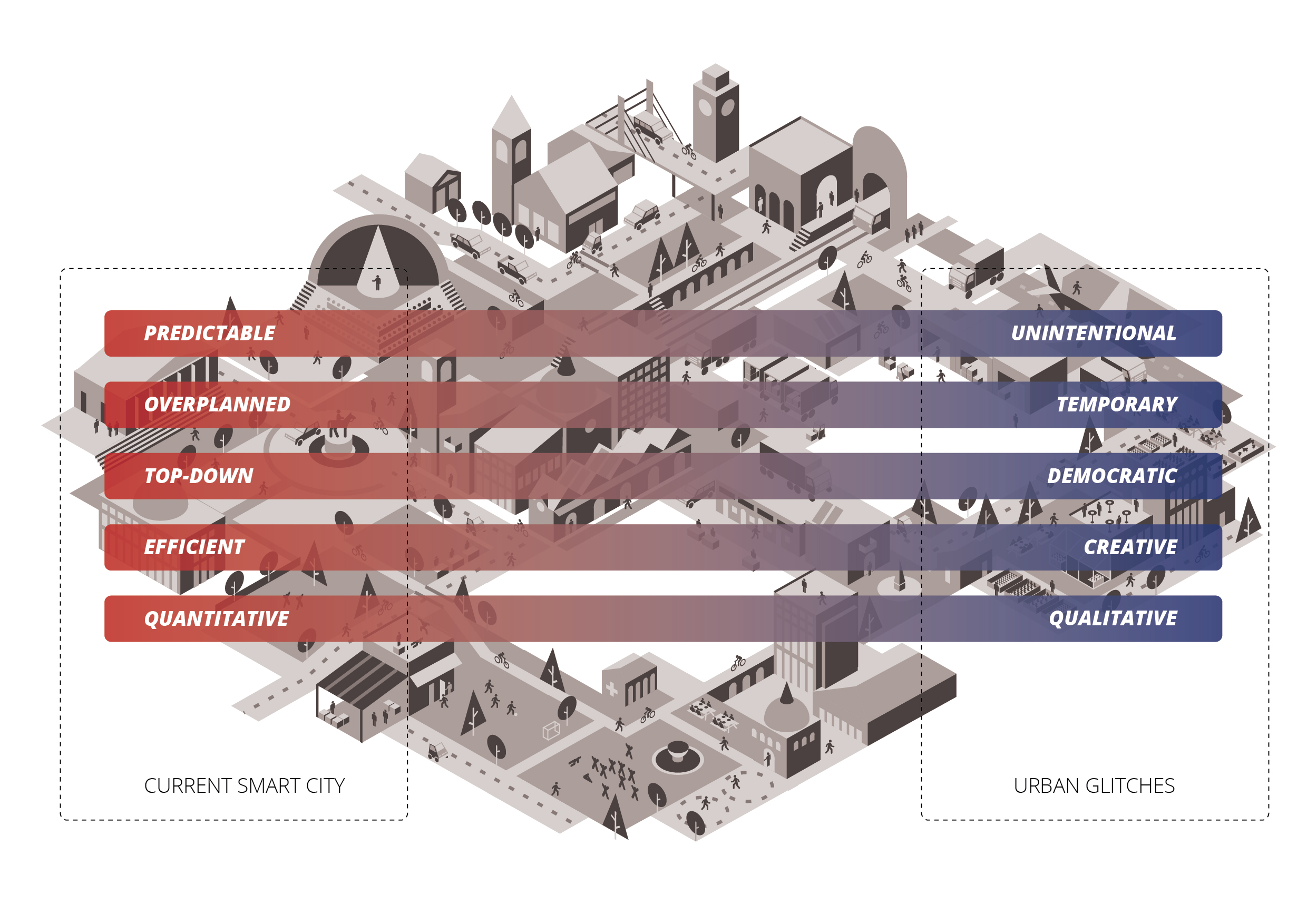The promise of new technologies in the built environment is to enhance and better the experience of living in cities. And one of the highly anticipated outcomes of the advancements in digital technologies in recent years has been to improve today’s quality of life of city-dwellers with making their cities “smarter.” The ‘smart city’ model enters the debate by employing technology as a strategy to optimize processes and operations, increase efficiency of systems, and monitor urban dynamics to ultimately get a precise control over the whole city. The assumption of this research is that the implementation of the smart city concept, as it is commonly described, understood and deployed, would reinforce the current tendency of shaping and evolving cities as digitally driven, routine-inducing built environments, eventually leading to even more technology-centered, un-eventful, and standardized patterns of living.
This study, an ongoing research at REAL in collaboration with the University of Bergamo, introduces a new take on the framing and creative potentials of situated and connected environmental technologies. In particular, it proposes the concept of Urban Glitches as a new paradigm for an alternative use of technology as a mediator of the relationship between individuals and the built environment. The research leverages on the notion of glitches as a trigger for creativity and articulates how they can translate to urban spaces. Urban glitches, caused in particular by human-nonhuman interactions within the built environment, then become important elements to help create technologically driven conditions other than efficiency, which is widely the driver in the approach to smart cities.
This research ultimately argues that creating a healthy tension through the introduction of the notion of urban glitches helps counter the current smart city discourse, and thus encourages designers to imagine and develop artifacts, buildings, and environments that foster creativity, open up spaces otherwise unexplored, make for a better ambiance, and lead to pleasant and unexpected repercussions throughout the whole city. Urban glitches – that are unintentional, temporary and ephemeral, democratic, creative, and qualitative – ultimately become a recipe for the design of technologically augmented or ‘smart’ cities.

